Writing the perfect email outreach is simple. But it can take hours if you don't know what to say.
Picture yourself waking up every morning, opening your email and see it filled. Only this time, instead of spam, you have meaningful conversations waiting for you.
Wouldn't you want to receive that kind of emails?
This is the type of outreach I envision.
I remember when I started working online, I was 21 years old and clueless about what to do.
I used to read articles from people who were in the place where I wanted to be but I never got much out of them.
The reason. I didn't know how to deal with people.
I created this post because I don't want you to make the same mistakes I did. I want to help you create the perfect email outreach and have the success you seek. You ready?
Let's get to it then.
More...
Humanitas Technique ─ The Perfect Email Outreach
On February 2015, I started my outreach campaign for link building. I was eager to get the massive success others were having with outreach templates and I wanted a piece of the pie.
There was only one problem.
Too many people had already used them.
In other words, they were already associated with spam.
Let's face it: Nobody likes spam.
Needless to say that my results were abysmal.
After the first 100 emails sent I had only managed to get one link placement. Soon after that, I received a reply to one of my emails that completely destroyed my ego and made me feel like crap.
It went something like this:
So what? You want me to link to you? Ha!
As I write this, I don't feel the same way I once did. When I read that email for the first time, it made me completely stop my outreach and quit for two straight months.
Now that I look back, it was a blessing in disguise. At the time, I only cared about myself and what I wanted. I was very selfish and I didn't realize there was a person on the other end of the screen.
I used to talk as if they owed me something. As if I was entitled to get what I wanted, but they didn't care about me. It was a hard pill to swallow. I didn't know how important it was to create my own personal outreach and today, I'll share what I've learned with you.
But before I continue, I'd love to ask you something.
How would you categorize the following email? Outreach or Spam?
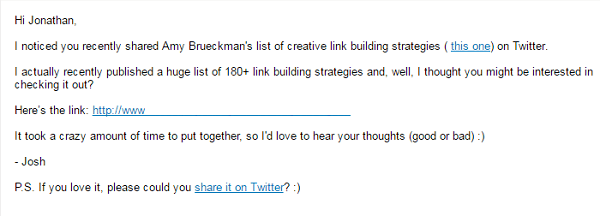
Email Outreach Example
The Humanitas technique consists in the genuine interest we have for another person. It involves the rule of seven, reciprocity, psychology, and biology behind decision making.
Now, there are a few things you need to know before you start your outreach campaign.
What Should I Consider Before Reaching Out?
We are all different. I don't mean the color of our skin or the language we speak, I mean we all have different values and beliefs.
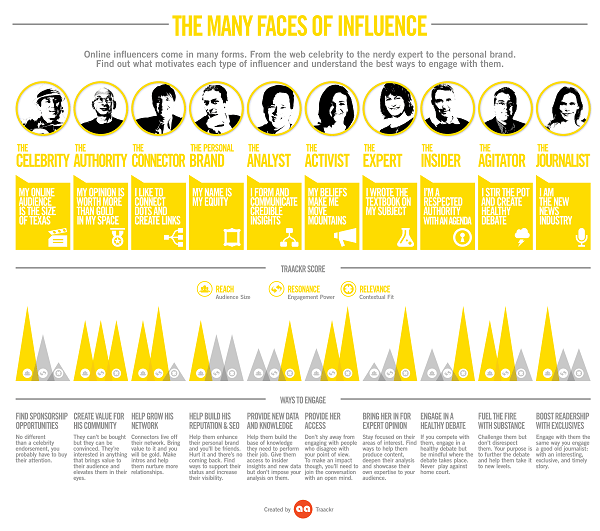
The Many Faces of Influence
Source: Tracker
What Are The Different Types Of Influencers?
Have you ever stopped to think about what the term “influencer” really means? What makes an influencer an influencer? I have.
And the best answer I could find came from Influencer Analysis:
Influencers are normal people who are often connected to key roles of media outlets, consumer groups, industry associations or community tribes.
Influencers may or may not be aware of your company, but represent control of an audience segment that is important to your business.
There are many types of influencers and it's important that you know every single one of them. Because your outreach should be different, depending on their "type".
Celebrities
Celebrities are people who play a huge role in a niche ─ sometimes even in our lives. They usually represent what's new, trending, and interesting.
They are the most important type of influencer. They get a lot of attention from the media and have huge audiences.
But unless they are getting paid via endorsements, it's very difficult to get their attention.
Journalists
A journalist's job is to inform us of what’s going on from a news perspective. Because of that, they play a large role shaping the way we see the world around us.
They get pitched all the time and are always on a deadline. So make sure to send them all the information necessary.
For example: Link to case study/article, credentials, social profiles, etc.).
Analysts
Journalists tell stories while analysts speak about the implications. Analysts are influential and important but I wouldn't recommend reaching out to them. Rebekah Iliff explains why on this Inc article.
If you are a PR pro, it’s vital for you to understand the difference between journalists and analysts so you don't pitch an analyst a news story or a journalist an analytical piece.
Thought Leaders
Thought leaders are people who bring ideas to life and usually start movements. The media follows them everywhere and have huge audiences.
They are known for thinking differently than most people about a certain topic. It's hard to get their attention but when you do, one shout-out from them usually brings huge benefits for your business.
Make sure to stand out because they usually get hundreds if not thousands of emails every day.
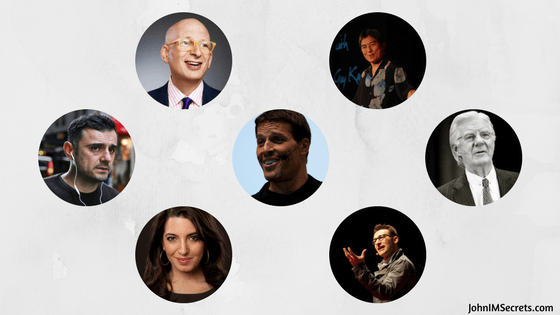
Thought Leaders
Think people like Guy Kawasaki, Gary Vaynerchuk, Seth Godin, Marie Forleo, and Tony Robbins.
Bloggers
Bloggers are probably the best way to spread the word about your business because they tend to write a lot. Some people write monthly, others weekly, and a few daily.
If you are a small business owner and don't have a big marketing budget. This could be the best way to grow your business.
Outreach Should be Personal, Not a Broadcast
Let's face it, we humans love quick easy wins but does that usually happen in real life?
Not really, life is a roller coaster of emotions. Sometimes we get things easy and we feel awesome, and most of the time it's hard.
Social media is very similar. If we only changed our approach, our results would be better.
Think of it this way:
We love the feeling of importance, recognition, we love to feel like we matter ─ because let's face it, we do. So, why not give it to people?
Let's make people feel how much they matter to us, and how much we want to connect.
It doesn't matter if you want help sharing an article or to get someone to link to you; it's always about people.
Whenever you send an outreach, ask yourself:
Would I be happy to receive this message?
If the answer is no, then work on it and always make it about them.
You Should Always Use Anchor Text
This is especially important for the digital marketing industry. We get tons of emails and most of them are spam generated by software.
Do you remember the first image I showed you? I asked whether you would consider it outreach or spam. Don't worry, in case you don't remember; here's the image once again.

Email Outreach Example
As you can see, this Josh guy says he saw one of my tweets. I guess it's related to an article he recently published.
Then, he adds the link to his article, but it's the raw URL. Never do that. The tweet thing and the raw URL immediately tells us that it's most likely software generated.
If you didn't take the time to show that you care about me, why should I care about you?
Most forms of outreach are cold. In other words, it's (usually) email from people whom we've never met.
Give me a reason to care and I'll help you in any way that I can, show me you don't care about me and I'll delete your email.
Here's what he could have done better.
- I don't remember the name of every person online (only the people that have made an impact on me).
- I don't need a link to my tweet. Why would I need that?
- Use an anchor text URL instead of a raw one.
- Talk about me. I don't know you, why should I care? The only thing I hear when I read that email is me, me, me, me, me. ─ Takers, not givers.
A better email could have been something like this:
Hi Jonathan,
I'm sending you this email because I came across your profile while I was on Twitter and I noticed you usually tweet about SEO. I thought you might like a post I recently published about link building strategies.
It involves 180+ strategies you can use to improve your website. It's called [link to the post with anchor text].
I know you might get many emails like this one but would you help me share it? It took a long time to put together and I believe it could help others as well.
Thank you for taking the time to read my email. Have a great day! :)
- Josh
That email is quite simple and it can be improved but it shows that you care about me and my audience.

How Can I Craft The Perfect Outreach?
A study by the Science Daily found that "the average American receives more than 15 hours a day of digital media." But how much of that time are we really paying attention?
Another study found that our attention span has dropped significantly. Back in 2000, the average attention span was 12 seconds and now it's 8.25 seconds.
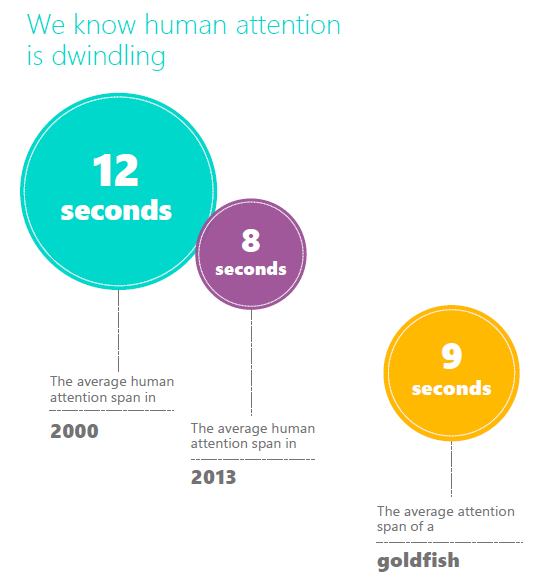
Human Attention Span
It's important to make the most out of the little attention we get to keep people engaged. But how do we do that?
We make it about them.
Let's face it, nobody cares about us (until we provide value). You care about yourself and your learning; that's why you are reading this post, right?
That's what this is all about, providing as much value as possible. Only then our name becomes relevant.

Humanitas Technique Pin
How Do I Provide Value?
To be honest, there's no set of rules to follow. Every person is different and the value you can provide will never be the same for everyone.
Back in 2015, I read many articles about how to create great content and how to promote it.
They would always say things like: "Provide as much value as you can".
Does that sound familiar to you?
Don't get me wrong, it's great advice but completely unactionable. I mean, how in the world am I supposed to provide value?
And to that matter, what the heck does value even mean?
Value is a magical thing we provide to a person that enriches their life.
We provide value by figuring out what every person wants and giving it to them.
Don't worry, it's easier to do than what it sounds like.
How Do I Give People What They Want?
I was fortunate enough to read a book called Jab, Jab, Jab, Right Hook by Gary Vaynerchuk. In that book, Gary tells people to "Jab" before throwing a right hook.
Jabs, are little nuggets of value that over time compound and allow you to throw a right hook ─ make a request. It could be asking for help, to consider buying a product, giving feedback, etc.
If you haven't read the book, I recommend you do it now. It's a wealth of knowledge and will help you understand how social media works.
If we apply this to our outreach, it can and will improve our results. But our approach needs to be genuine and generous.
For instance, let's say that we want to promote a piece of content and we've already found the right people in our niche. Now all we have to do is reach out to them, right?
Wrong.
That's what most people do but it's like going to war without ammunition. You just don't do that, or at least you shouldn't.
If we want to get someone's attention & connect, we need to find out what they care about first.
Since we already know they are in your niche, we know they have similar interests to yours. We'll use that to connect.
Check Their Social Profiles
Go to their Twitter, Facebook, Instagram, Pinterest, etc.. Anything that can help you get a better understanding of who they are. Look at everything they share and make a short list of topics you have in common with them.
It doesn't have to be long; 3 topics should suffice.
Remember, we want to connect with them. For that, we need to find out what they care about and things we have in common.
Read Their Blog Posts
A great way to provide value is to read their articles. Read their blog and guest posts. On most articles, you'll find at least one call to action. That's them telling you what they want! A nice way to throw a jab 🙂
If they want to hear from you in the comment section, do it. But don't go writing useless comments like:
- Nice post.
- Thank you.
- This is a great post, as usual.
Make sure to give an insightful comment. It doesn't have to be long but it needs so provide "value" and be genuine (don't lie). In other words, give feedback.
For example, on this post, I have a few calls to action like:
- Sharing on social.
- Reading books.
- Leaving feedback.
- Join my email community.
Those are great ways to show you are paying attention and want to connect.
Example:
Recently, I was searching for Pinterest boards to join and I came across Sue Ann Dunlevie from Sucessful Blogging.
Sue wrote an article I found interesting and decided to comment. This is the the comment I made:

Humanitas Technique - Comment
After a couple of days I got the following reply.
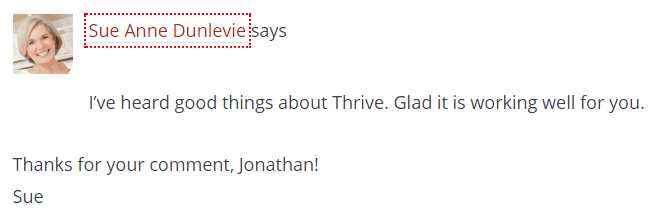
Humanitas Technique - Comment Reply
It doesn't have to be super long or complicated. It just has to provide value.
After that, I sent Sue an email and joined the collab board I wanted. 🙂
What Are The Ingredients of The Perfect Outreach?
A while ago, I came across the following analogy:
Sports and board games have rules but video games have laws.
Let me explain: In soccer, for instance, you don't touch the ball with your hands because you've agreed not to. In FIFA, you don't touch the ball with your hands because it's impossible. There's no button for it.
In other words: In a sport, you can do anything that isn't forbidden by the rules. In a video game, you can only do what is allowed by the system.
Think of the following layout as that system.
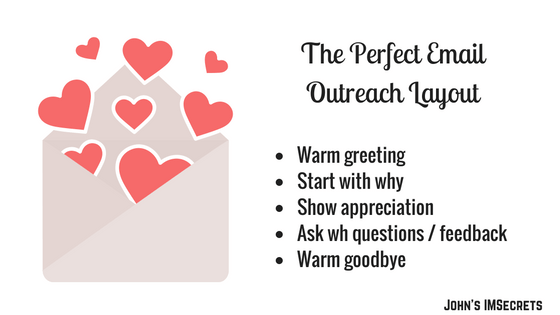
The Perfect e-Mail Outreach Layout
Friendliness Goes a Long Way
When I was a kid, my mother told me to be friendly when meeting new people and to always smile. It was a lesson I will always remember. It improved my relationships and as a consequence made others friendlier. It's like magic. 🙂
Let's face it nobody likes someone who is rude. Be nice to people and they will be nice back.
Here are a few greetings you can use when you create your message:
- I hope you are doing well.
- I hope you are having an awesome day.
- I hope this e-mail finds you well.
Always Address People By Their Name
Everything I’ve read and my own experience has shown me the importance of a name.
Never address your message to:
- Dear webmaster,
- Hey,
- Hey there,
- Dear sir,
- Hello,
That’s the fastest way to get them to either ignore or delete your email ─ I’m no exception. Our name is the most beautiful and amazing name on earth to us; make it personal.
An outreach should always be friendly and personal.
Always Start With Why
There are people who give pleasantries on their email and that's ok. What's not ok is to use them to try to make people more susceptible to your request.
If you want help with something, just say it. People are busy. If you respect their time, they will respect you.
After that, if you still want to give pleasantries, do it. They will appreciate them. 😉
An outreach should always start with the reason you are reaching out.
You Should Always Go Right To The Point
Don't waste their time with a 2,000-word email. That's the fastest way to get them to NOT read your email. I mean, would you read that? I wouldn't.
It's Not About You
Let’s face it, we all have problems. The only difference is in how these needs and/or problems present themselves.
And to you your problems are at least 1,000 times more important than those of others. So why would it be any different for the people we reach out to?
Knowing that, can you make them care?
When we reach out, it's usually because we want something. But let's face it, why would they help us? They most likely don't even know us.
We need to give them a reason to care but how do we do that?
Its simple, we make it about them.
When was the last time you talked to a friend and they were like: "We always talk about me, let's talk about you this time."
Odds are never, right? Why?
We love to talk about ourselves. We crave the feeling of importance, to feel like we belong, of being appreciated.
Be generous.
Give that to people and they will love you.
Do unto others as you would have them do unto you. ─ Luke 6:31
Make Your E-mail Engaging
When was the last time you asked someone to talk about themselves and they didn't want to do it? People love to talk about themselves, give them the opportunity to do it and listen.
An outreach should always be short, engaging, and never about you.
The Perfect Email Outreach In 5 Simple Steps
The layout is simple but effective. I recommend you test it with your own words and let me know your results.
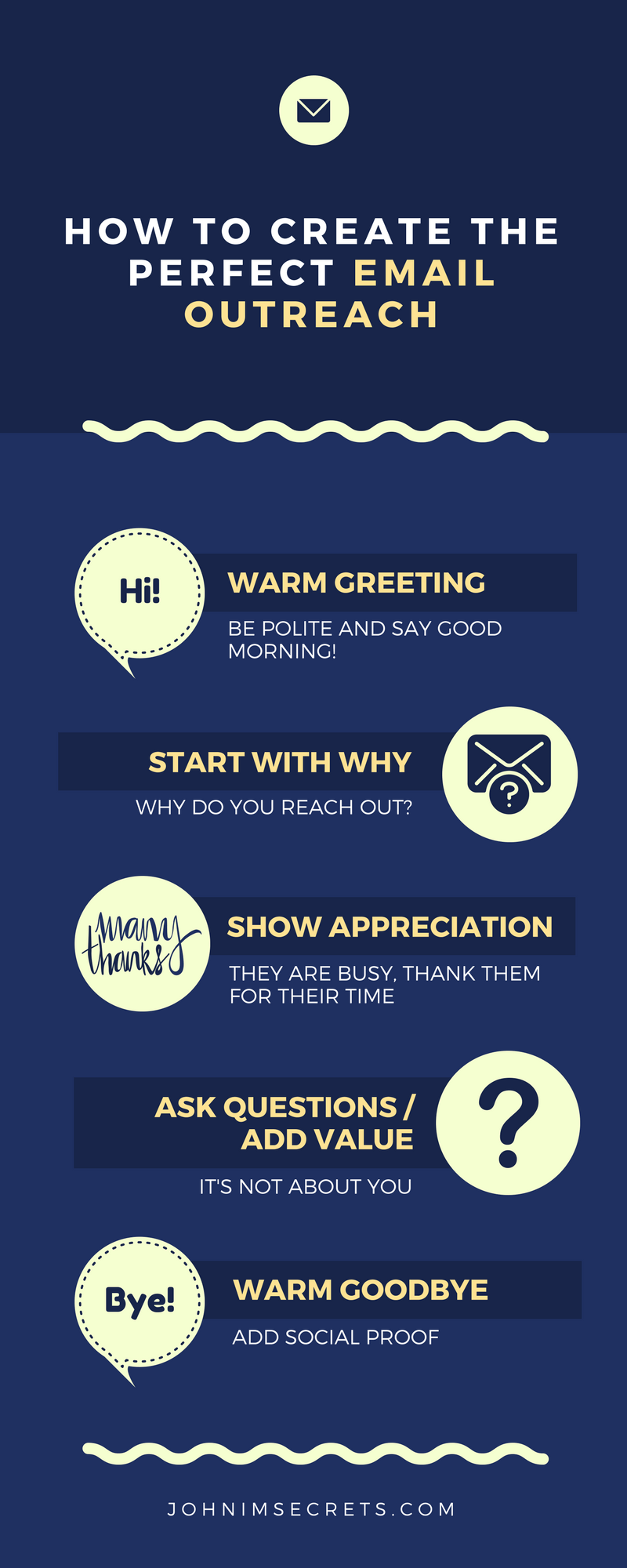
Humanitas Technique - How to Craft The Perfect e-Mail Outreach [Infographic]
Would You Kindly Share This Infographic On Your Site?
Step 1. Start With a Warm Greeting
Think about this for a moment: When was the las time you were walking down the street and a complete stranger said "good morning"? Did you reply to his greeting?
Email is no different than a conversation you would have on the street. Be nice and greet them.
Good manners matter and they matter a lot.
Step 2. Always Start With Why
Quick question: Do you watch a TV show as soon as it airs?
I can't remember when was the last time I did that. Odds are you can't either. We watch it on our time.
Here's the thing. As humans, we love to have complete control over our lives. That includes when we watch a sitcom, a video on YouTube, etc.
And we hate when people interrupt us and waste our time.
Be mindful of people's time and go to the point. We all know that if you send an email, tweet, WhatsApp, etc. is because you want something from us.
It might be our attention or to ask for help. Yet, you want something. Say it.
Step 3. Always Show Appreciation
They've taken the time out of their busy day to read your message. Thank them for their time.
You can say something like this:
I know you are busy and must receive many emails like this one. I appreciate you taking the time to read it.
Remember, it's not about you. It's about them.
Step 4. Ask Wh/ Questions or, Give Feedback
The whole point of an email, tweet, or message is to start a conversation. Ask questions related to what they care about.
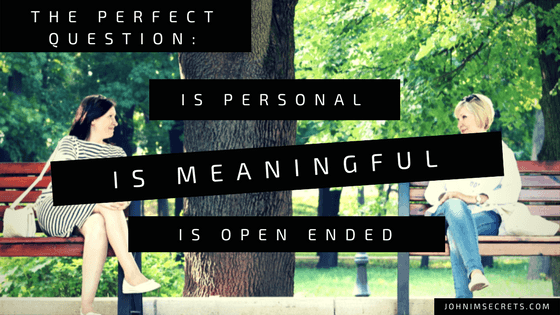
Elements of The Perfect Question
Let me add more context:
- Personal: It can only be answered from their perspective.
- Meaningful: Thought-provoking (it makes you think).
- Open Ended: Elicits a story (not just "yes" or "no" answers).
Great conversationalists are the ones that talk the least.
Step 5. Add a Warm Goodbye
Whenever we talk to someone, we should always give a warm goodbye with the hopes of hearing from them soon.
Here's a short list of expressions you can use:

Most Effective Email Closings
Use your closing line to make your message warm, friendly, and to encourage action.
How Long Should My e-Mails Be?

Message Length vs Response Rate
A study by Boomerang shows that the perfect length is between 50 and 150 words with a 51% response rate. It's worth mentioning that emails that were longer (175-200 words) had a 50% response rate. It won't be lowered much so it's up to you.
Is the guide useful/helpful? Would you kindly help me share it?
Thanks in advance! :)

In Conclusion:
I know that most people won't do what I've shared here today. It's very simple but time-consuming. Yet, if you really want to cut through the noise, this is what you need to do.
From the bottom of my heart, I wish you nothing but success.
I'd love to update this guide in the future and your feedback is very important. Would you kindly help me answer a few questions?
- What industry are you in?
- What is your biggest struggle with outreach?
Kindly let me know your answers in the comment section below 🙂
Blessings,
Jonathan Nuñez
Founder, John's IMSecrets


Great tips Jonathan! It’s always a hit and miss with email outreach but it’s definitely still the best way to reach out. I was wondering, how many follow up emails do you send? and when do you send them?
Hey Emmerey,
Most people communicate what they want and never talk about how they can help others. It’s the same with outreach.
There are two main things that influence the outcome of your outreach:
1. Your content.
2. The outreach itself.
If your content isn’t good enough, it won’t matter how amazing your outreach is. People won’t share it. The same thing happens when the opposite is true. If your outreach is amazing but your content sucks, your results won’t be good.
To answer your question, I only send 1 follow-up email after three days. We are human and we easily forget when we get distracted. A simple reminder is enough to get a response. As long as our outreach is about them and how we can help them get closer to their goals.
Always think in terms of the other person’s point of view and you won’t have to follow-up often.
Blessings,
Jonathan
Wow. Thank you Jonathan for all these amazing tips. Helps a lot! Thank you for responding 🙂
No problem, Emmerey. If there’s anything else I can help you with, let me know. 🙂
Hey Jonathan,
I’m in the blogging industry (like you). I focus on sharing advice on email marketing.
The biggest struggle I have with outreach is finding email addresses. I use Clearbit right now which works pretty well, but it’s not perfect. I also have work arounds when I can’t find an email address.
Right now I’m not interested in paying for a solution/software because i’m not a scale where it’s worth the investment for me.
Thanks for keeping it real,
Jared
Hi Jared,
I hope you are doing well. Like you, I had a lot of problems finding email addresses. Here’s the process I follow:
1. Go to Twitter and look at bios and the header image.
2. Go to their website and look at the top and bottom of the page. Then, open the about, contact, and author page.
3. If they have a Google+ account, they might share their email address in the links section.
4. Go to LinkedIn and look at their summary and image header. If you still can’t find it there, you can add them to your network and you’ll be able to see their email address.
5. If that doesn’t work, I use Hunter.io to find email addresses. They give you 100 free searches per month and let you verify your findings.
6. I use BuzzStream to make lists and find contact details, but it costs $19 per month.
Hope that helps you find email addresses more easily. If you have any suggestions, I’d love to know about them. 🙂
Have a great day!
– Jonathan
Thanks Jonathan for the step-by-step breakdown. I’ll look into hunter.io as well as Buzzstream just to learn more at least.
Thanks,
Jared
Any time, Jared. Happy to help. 🙂